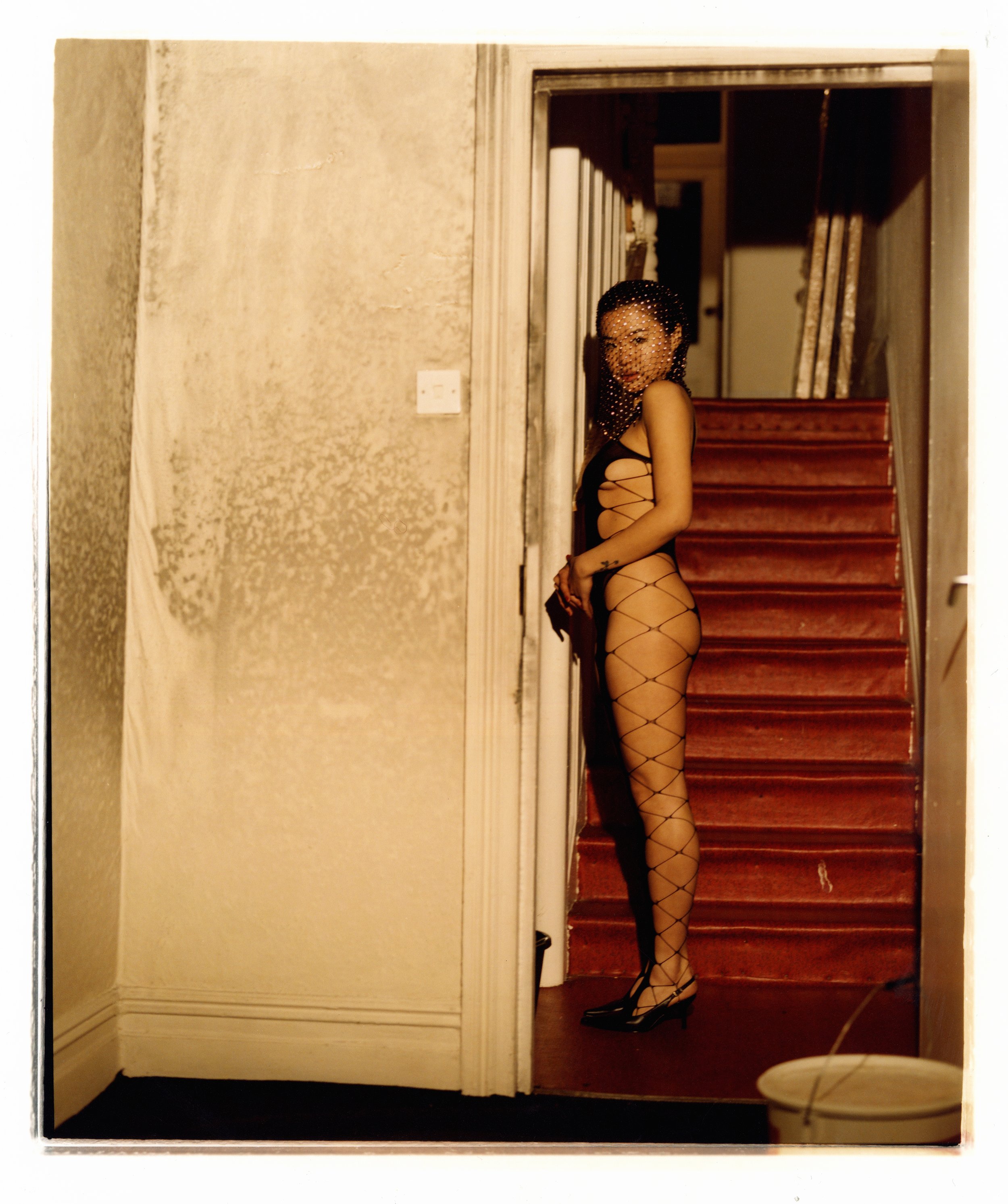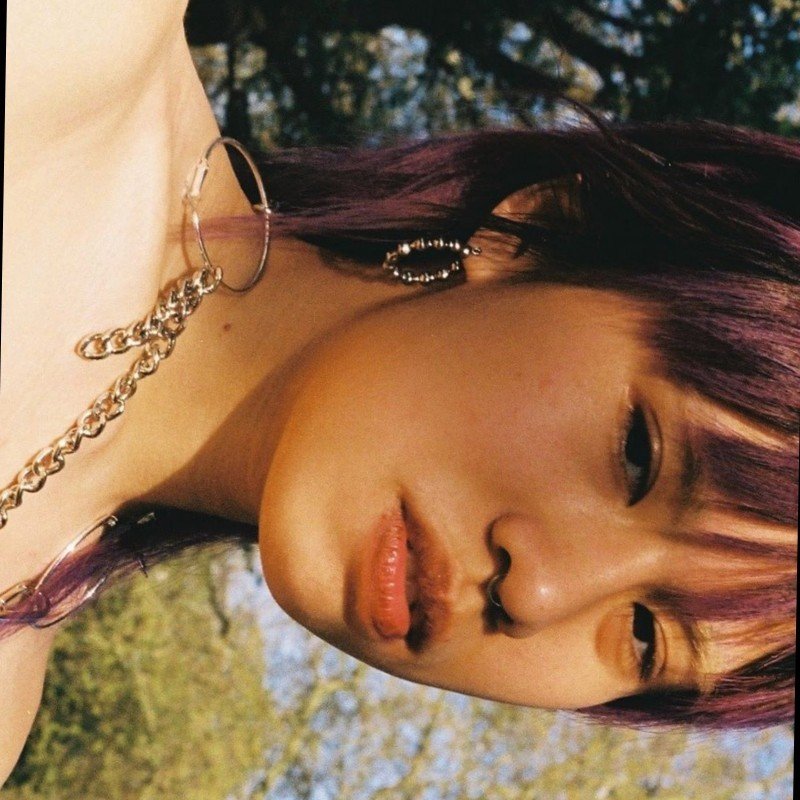Inside the Photographer’s Studio - Nicole Ngai
Prim's Contact Sheet, 2020
On the Post-Colonial Gaze
February 9th, 2023
By Anna Prudhomme @annaprudhomme
In Brockley, South London, inside one of the old Victorian houses lives Singaporean photographer Nicole Ngai. With long pink hair framing her face, Nicole opens the door as a grey cat runs behind her. She’s a 27-year-old fashion and portrait photographer, whose practice tenderly explores intimacy amongst her friends and models.
Greatly inspired by Hongkongese film director Wong Kar-Wai, Nicole’s primary colour palette echoes the neon lights of this southern Chinese city, which is also her mother’s hometown. But growing up between Singapore and Hong Kong was not the easiest for such a creative person who always knew she loved art. In kindergarten, when asked by her mother what she wanted to become, Nicole answered she wanted to work in a fashion magazine, just like her uncle. From there she began buying copies of British publications like Dazed and i-D and soon aspired to move to London, a place where she believed she could be truly herself. “In Singapore, the society isn't really supportive of you, they are business focused and don't take art seriously. And if you think differently from everyone, that's kind of a problem….” reflects Nicole.
Over the years that followed, Nicole graduated from a Fashion Photography BA at UAL, won The British Journal of Photography’s Portrait of Humanity award, and was featured in i-D. She has shot campaigns for brands such as Adidas, Converse, and Mercedes Benz, and she produced the album artwork of the British musician TSHA - which ended up on a billboard in Times Square. Most recently, she hascompleted a calendar for Brick Magazine, featuring the Ru Paul Drag Race UK’s star Black Pepper, raising money for Outside Project - an LGBTQ+ community shelter for endangered or homeless queer people.
“A photograph holds many layers of meaning, from how the subject looks to how the image reads in a wider societal context. It's important to understand how you contribute to the narrative of image making.”
In terms of artistic direction, portraiture holds a strong place in Nicole’s heart. As she explains, her practice is based on the interaction between her and the person she’s capturing. On set, Nicole is always asking her models what they think of the picture or how they like to be portrayed. “I believe that all photographers hold the huge responsibility of representation and care. A photograph holds many layers of meaning, from how the subject looks to how the image reads in a wider societal context. It's important to understand how you contribute to the narrative of image making,” Nicole wisely acknowledges.
Awa for Gaffer Magazine, 2020
Beabadoobee for Refinery29, 2020
Yellowish lights fill up her living room and a strong coffee smell is coming out of the kitchen as Nicole explains how she shot some model friends at home, using a wide curtain rod to hang backdrops.
“Shooting in my house felt really DIY but it also made the atmosphere casual and intimate which I loved,” said Nicole, who also loves shooting at other people’s homes to have a better grasp on their personalities. “I’d love to have my own studio, but as an immigrant in the middle of the cost of living crisis, renting a space or even just surviving as a creative, is hard at the moment,” she said. In addition, the crisis is also affecting her use of analog photography as film prices are getting far more expensive than they used to be. To counter that, Nicole just bought a Pentax 645 camera and explains, “the negative frame is smaller, which means you can fit more in one roll of film.” A smart and economical move which she’s rather proud of.
“I’d love to have my own studio, but as an immigrant in the middle of the cost of living crisis, renting a space or even just surviving as a creative, is hard at the moment.”
It’s true that Nicole never runs out of brilliant ideas, one of which was self-publishing her three fanzines. The first one, rather experimental, was made in 2018 while still at school. “I messed up some film, did some double exposure, there are some scratches and lots of happy accidents. I really liked that freeness about my work, I wasn't thinking too much but I don't really have that anymore…” explained the photographer. She then published another one in 2019, which focused on intimate photographic exchange with her models, mostly women of Asian origin. And her latest explores the tenderness of time passing and was made in collaboration with Ezekiel, a Filipino artist.
Lovers in a Bed of Flowers, 2021
MMRMS Studio, 2020
In her practice, womanhood and femininity play a key role. While at university, going out in East London’s queer club scene, her subjects were the female, non-binary, or queer friends she made. It was also while studying that she befriended a lot of girls from Asian backgrounds, feeling that sharing a similar culture created an immediate connection which is very comforting when navigating a new world. When still living in Singapore, Asian girls also happened to be her first models, and capturing women of her diaspora seemed like an emotionally relevant choice after moving to the UK. “It’s just nice to see yourself represented and I really wanted [my work] to be about the connection between me and my models and how we have this kinship being away from home.”
Digging deeper, she used her camera to explore what she names “the post-colonial gaze” on the women she captures. “Traditionally the photographic gaze was predominantly white and male and suggested a relationship of power and control. Photography has acted as an agent of Western colonising authority over marginalised bodies, portraying for instance East Asian women as subservient, hypersexualised and the ‘Other’,” explains Nicole. Her work thus aims to decolonise the dominant western narrative by taking back power through tender visual representation.
A Hot Summer Day, 2019
Amanda, 2019
In her room, Chinese lanterns are hung from the ceiling, a red cover with Japanese flower pattern is spread over her bed and tons of books and magazines are crawling on the shelves. Looking closer, I noticed that lots of them are about East and Southeast Asian art and artists and the others seem to look out at sensuality and sexuality in the arts. The complete history of Japanese sex cinema; Haruki Murakami’s The Wind-Up Bird Chronicles; Mean Muse, a magazine dedicated to women and non-binary people in music'; and British photographer Harley Weir’s visual essay on the female body, all sit side-by-side… Lots of inspiration and references making Nicole’s work unquestionably intellectual.
“It’s just nice to see yourself represented.”
Today, her practice also focuses on the beauty of the juxtaposition of contradictory situations such as exploring hardness versus softness. Nicole illustrates this by showing me a picture she took “Here my friend Amanda is wearing lace underwear, but she’s outside. [She has] lots of tattoos but [I’m] focusing on that beautiful hand-holding moment.” A tender sensuality emanates from all of Nicole’s images, as seeing one-dimensional stereotypical portrayals of marginalised people made her want to focus on creating images that instead felt authentic and true.
Jen wearing Nicole Ngai x Rhi Dancey, 2022
Self-portrait on polaroid, 2020
Ultimately her work is about allowing a space for intimate expression and exploration of the self. Which is a topic she’s delving into deeper through her next fanzine - a look at the complex relationship she has with her culture’s traditions and superstitions.
Always having colourful hair and dressing differently Nicole has always stood out. For example wearing the qipao, a traditional Chinese outfit, in black (the “unlucky colour”), to a family meeting. This has meant Nicole has had a hard time feeling appreciated in her culture. Something which can be exacerbated during the Chinese new year, which can be a stressful period when you meet all your extended family members, explains the photographer before adding, “There are always things you should and shouldn't do. You must wear red underwear, because it's lucky. But you mustn’t wash your hair because you're washing away your luck...”
Forever as playful as she is intellectually involved, amusingly, the first photograph opening her next zine will be Nicole washing the bold pink hair dye I noticed immediately out of her hair….
About Nicole Ngai
Nicole Ngai is a Singaporean photographer based in London. She graduated from the BA Fashion Photography course at London College of Fashion in 2019, where she specialised in analogue photography and darkroom techniques.
Her work explores themes such as empathy and interpersonal relations within the act of photography by capturing the intimate exchanges amongst her friends as models. Her work also looks at sensuality, representation and the body through a post-colonial gaze.
Nicole has self-published three photo zines, Bloom (2018) Threads (2019) and Tender (2020).









